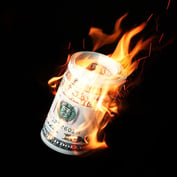Quick Take: Edmund Harriss runs the Guinness Atkinson China & Hong Kong Fund (ICHKX) by closely tracking stock fundamentals while keeping abreast of technical factors as well as market psychology. His goal is to tap into the burgeoning Chinese economy by selecting choice investments from the Hang Seng Composite, an index of 200 firms based in, or doing business in, China or Hong Kong.
The $111.0-million fund has no market cap restrictions. However, out of concern for liquidity, Harriss avoids companies valued at less than U.S. $200 million in market cap, as well as positions that require more than five days to sell. Nonetheless, the fund’s turnover is markedly lower than its peers. In addition, its expense ratio of 1.81% compares favorably with 2.22% for its peers.
With just 44 stocks in eight sectors, the Guinness Atkinson China & Hong Kong fund is not only country specific, which courts greater risks, but relatively concentrated. “There’s only so much diversification that adds value,” Harriss says. “If I want a car company, I’ll hold one — not two or three.” A portfolio of this size is meant to track and to watch the stocks “likely to cause problems,” he says.
The fund has done a good job of offering investors exposure to China with solid long-term returns while roughly matching its peers in volatility. For the three years ended in December, Guinness Atkinson China & Hong Kong fund returned 17.3% annualized, versus an average gain of 15.1% for its peers. For the ten-year period, it holds the No. 1 position among China funds, returning 7.7% annualized, versus 2.0% for its peers. The portfolio carries a 4-Star rank from Standard & Poor’s.
Harriss has been the fund’s lead manager since April 1998, when he lived in Hong Kong. Since 2003, he’s been in based in London. Timothy Guinness joined him as co-manager that April. As of Dec. 31, 2004, Hong Kong shares represented 35.9% of fund’s assets; H Shares were 23.7%; China Plays, 19.5%; Red Chips, 18.3%; and cash, 2.6%. The categories are defined further below.
The Full Interview:
S&P: How would you describe your investment strategy?
HARRISS: I’m looking for capital growth using a bottom-up stock-specific approach. I see share prices being driven by four factors, and I build my portfolio accordingly, believing that more positions will work out than won’t.
S&P: Are you concerned about holding shares in companies owned by the Chinese government?
HARRISS: No. In any Chinese company, the government is likely to have a stake — particularly with the H shares and in key areas such as oil, telecommunications, and power. The government doesn’t necessarily exercise management control day to day, and the companies are reasonably transparent. You have to look at their track records.
I’m more concerned about the alignment of interests between managers, shareholders, and parent company. When the parent starts fiddling around, it is a recipe for losing money, and stock prices take a hit. I am also cautious about large IPOs by companies without track records.
S&P: What is your view on the political risk of investing in China?
HARRISS: In China it is lessening, although Taiwan is a wild card. I think China’s commitment to private ownership and the market economy is unquestioned. However, there can be sudden or capricious change in government policy or the competitive environment.
S&P: What are your buy criteria for stocks?
HARRISS: We have four: quality, measured by return on investment; value; positive earnings revisions; and technical analysis of short- and medium-term share price. While none of these likely drives the share price by itself, I believe that together they do in the medium term.
S&P: How long do you usually hold stocks?
HARRISS: As long as the four criteria hold together. Esprit Holdings Ltd. has been in the portfolio for five years, and HSBC Holdings plc since the fund started in 1994. The turnover of 30% means the average holding period is about three years.
I’m prepared to let a stock run even though it may be expensive on a P/E basis. But if analysts start to downgrade its earnings forecasts, it’s practically impossible for a stock to outperform.
S&P: How do you decide which stocks to buy?
HARRISS: I rank the 200 stock universe in terms of our four criteria, and conduct due diligence on the top 20 stocks. The best a company can score is 40; the worst is two.
I analyze where returns come from, look at working capital, and build P&L balance sheets and cash flow models to conduct sensitivity analyses. To get a valuation, I look at discounted cash flow as well as price/earnings and price/book multiples. Chinese companies typically sell for around 11 times earnings; Hong Kong companies, 16.5.
S&P: You mentioned H Shares. What other kinds of shares can the fund hold?
HARRISS: The fund can hold A and B shares — those listed and traded in Mainland China — but at the moment doesn’t have any. Those companies are usually at very early stages of development and trade at high valuations because domestic investors have nowhere else to go.
S&P: Do you ever take a contrarian view when it comes to stock selection?
HARRISS: I rarely take a contrarian view. If the market generally is revising down its expectations for a stock, I am not going to buy it. With this portfolio, I’m trying to get it more right than wrong.
I’m interested in what the market in aggregate thinks, its expectations for earnings revisions and the dispersion of those estimates. But we have to establish whether the market is correct and trends are sustainable.
S&P: How are the fund’s assets allocated?








 February 15, 2005 at 07:00 PM
February 15, 2005 at 07:00 PM










